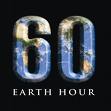 |  | |
|
Brisbane Weather Now BRISBANE WEATHER Latest weather long range forecast :: Queensland: Week by Week (Updated) December: Forecast Overview for Northern Australia The northern parts of Queensland and the Northern Territory are expected to experience above-normal rainfall over the next six weeks. Conversely, eastern New South Wales and parts of southeast Queensland are predicted to have drier conditions than usual. Significant rainfall is anticipated in specific areas, particularly around the Cape York Peninsula and the Kimberley region. The oceans to the north of Australia are coming alive next week. Dry continental air pushing through mainland northern Australia interacts and imparts spin as well as strong flaring convection as it encounters the deep tropical westerly operating north of Australia. The result will be a LOW or Equatorial Trough developing to the North of Australia. What it then does is anyone's guess longer term and will depend on how strong the dry air surge is and how long it wants to stick around for. The only other area of weather interest away from Australia's deepest northern regions for the next couple of weeks (after Monday) is SEQ/Eastern NSW as moisture steadily returns to those areas from next weekend. The Coral Sea remains an interest area beyond week 2 with the MJO hanging around to the north and north-east of Australia for at least the next 4 weeks (possibly longer). That means the far NE coast of QLD shows some possible wetter signals in weeks 3 and beyond. This MJO stall will make it interesting to see if the developing La Nina could weaken with the atmospheric anomalous westerly winds looking to offset the enhanced trade wind flow for the coming month. If that happens the Nina could be over before it had a chance to fully begin. Caveat : SSW's Are Sudden Stratospheric Warming Events about antarctica which shot up 30 degrees on normal, while this driver is not directly influencing weather else where, its sign can produce warming closer to the southern jet streams and that can directly affect the weather patterns down there. the jet streams with lows of 13 hectopascals on average and warmer then normal on high pressure zones This is a new phenomon and climatologists do not understand this mechanism yet. this is only the third since 2002 and 2019. Thus the season ahead is in unknown charted waters and what appears as signals of wetter or dryer conditions may not eventuate. ****** Below are a list of drivers and patterns which may or may not eventuate ***** However Putting that SSW aside and assuming it hase zero effect (a stupid assumption of course) we see our more traditional climate drivers - the ones we actually understand well - indicate a wet Spring and early Summer due to a marginal La Nina and strongly negative IOD. Both of these signals fade back to neutral over the latter Summer. and so correspondingly weather conditions being forecast to trend back to near average for Jan - April. Importantly there are no confident drier than normal signals across most of Australia in the coming months so that's a pretty telling signal in itself. Cyclone Development Potential Current models indicate a moderate risk for a tropical low developing into a cyclone, particularly affecting the northwestern cyclone region but remaining thousands of kilometres offshore. Despite warm ocean temperatures, there is no significant evidence for early season cyclone activity near Australia, although conditions for development are being monitored. The potential for strong uplift and rain in northern regions may increase as we approach mid-November. At A Quick Glance: it is no secret that Spring looks like it will be an active one with a Negative IOD, cool neutral to borderline La Nina conditions and above average SST's around the country. As we head deeper into the wet season, those climatic conditions neutralise somewhat, and this is reflected in the climate modelling for Summer. Dec 13 : Our early Wet Season has been saved by a peculiar Upper level system that forms in the NT and is set to drag in moisture from the deep tropics next week and set to assist in the formation of a LOW in the Arafura Sea and drag it southwards into the Eastern NT or the GOC. What that LOW does after coming onto land will determine the following week of weather (22nd - 29th). One thing's for sure it's not a 'normal' way to start a monsoon season but if it's one thing this past decade has taught me is to perhaps redefine what 'normal' is... In early January our focus is still firmly in the Coral Sea and potentially the FNQ coast. Coral Sea is above normal Temperatures Overview of climate (Long Range): IOD: Negative and dipping further Feeding more Moisture from Indian ocean and coral sea until January rise to neutral La Nina at Cool Neutral to Borderline and dipping further until summer with projections of el nino conditions Australia - South Pacific --- A fairly text-book spring pattern continues in the Southern Hemisphere as a Sudden Stratospheric Warming (SSW) event over Antarctica adds a bit more "oomph" to the usual spring westerly chaos. For the most part Spring 2025 is what we'd call a typical "classic spring" with a mixture of lows and highs moving through - but there's also a definite boost in westerlies across New Zealand and the southern half of Australia. Despite the blustery spring for some, those in northern Australia continue to lean drier - but more signs of the wet season are now showing up as thunderstorms and tropical showers start to develop. More low pressure is also forming in the north, although not yet producing much rain. Eastern New Zealand is also drying out, while the west of NZ and the deep south of the South Island remain average to maybe wetter than average in some locations. |

We Media

Earth Hour

Canstar

EBU
ONLINE!!
We are now Relaying
LM Radio from Maputo Mozambique
LM Radio from Johannesburg
Magic 828 Cape Town